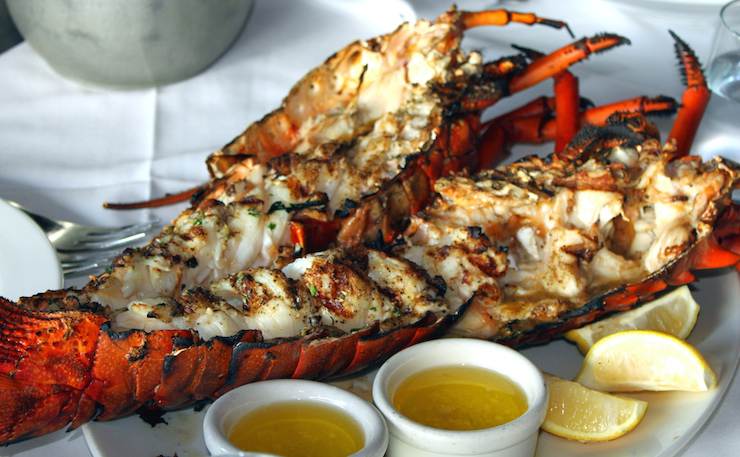A new study suggests overfishing can cause problems down the food chain, ultimately leading to the release of greenhouse gases. Paul Mahony explains.
Meat from ruminant animals such as cows and sheep has long been recognised as a key culprit in causing climate change. Meat from pigs and chickens is also a major problem, and could represent the step that takes us over the climate change precipice due to the destruction of Amazon rainforest for soybean feed crops.
Another potential game-changer is seafood consumption.
So what’s the problem with seafood? Fish and other sea creatures don’t belch methane like cows and sheep, and they don’t require us to destroy massive areas of rainforest for grazing and feed crops.
The oceans cover 71 per cent of our planet’s surface. They are home to complex ecosystems that are being disturbed by industrial and recreational fishing, and other human activities, in ways that may profoundly affect our climate system.
A recent paper in Nature Climate Change has helped highlight some of the impact. The problem arises largely from the fact fishing disturbs food webs, changing the way ecosystems function and altering the ecological balance of the oceans in dangerous ways. The paper focused on the phenomenon of “trophic downgrading”, the disproportionate loss of species high in the food web.
It reported on the loss of ocean predators such as large carnivorous fish, sharks, crabs, lobsters, seals, and sea lions, and the resultant impact on carbon rich vegetation and sediment on the ocean floor. It cited earlier research indicating the overall predator population had reduced by up to 90 per cent from natural levels.
Based on the research findings, that reduction is likely to have adversely affected the ability of vegetated coastal habitats (consisting of seagrass meadows, mangroves and salt marshes) to absorb or sequester atmospheric carbon. It would also have released massive amounts of carbon (unaccounted for in any official emissions figures) in the form of CO2 remineralised from carbon that had been stored in the vegetation and underlying sediment.
The problem arises when the loss of high-level predators causes an unnatural increase in the population levels of their prey, who may be herbivores (such as dugongs and sea turtles) or bioturbators (creatures who disturb ocean sediment including certain crabs). With reduced predator numbers, the former prey has a far greater impact than previously on their own food sources in vegetated coastal habitats.
Those habitats are the most carbon-rich ecosystems in the world, capturing carbon forty times faster than tropical rainforests. Most of the carbon stored in them is in the form of organic matter trapped in the underlying sediment. The sediment contains little or no oxygen, allowing the organic material to last for millennia.
Despite their relatively small overall area they represent fifty per cent of the carbon buried in ocean sediments.
Release Of Carbon Stores
Vegetated coastal habitats are estimated to store up to 25 billion tonnes of carbon. If it was released in the form of CO2, it would equate to more than twice the emissions from fossil fuels globally in 2013 (92 vs 40 billion tonnes).
Estimates of the areas affected are unavailable, but if only 1 per cent of vegetated coastal habitats were affected to a depth of 1 metre in a year, around 460 million tonnes of CO2 could be released. That is around the same level of emissions from all motor vehicles in Britain, France, and Spain combined in 2010, and not far below Australia’s most recently reported annual emissions of around 540 million tonnes.
We can extend the comparison by saying that if 10 per cent of such habitats were affected to the same depth, it would be equivalent to emissions from all motor vehicles in the top nine vehicle-owning nations (USA, China, India, Japan, Indonesia, Brazil, Italy, Germany, and Russia), whose share of global vehicle numbers is 61 per cent. It would also equate to around eight times Australia’s emissions.
Loss of Ongoing Carbon Sequestration
The other key problem is a reduction in the ocean’s ability to sequester (or absorb) carbon from the atmosphere.
If sequestration capability was reduced by 20 per cent in only 10 per cent of vegetated coastal habitats, it would equate to a loss of forested area the size of Belgium.
Adverse Impacts of Recreational Fishing
With their close proximity to land, vegetated coastal habitats are vulnerable to the impacts of recreational fishing.
An example involved salt marshes in Cape Cod, USA. Recreational overharvesting of predatory fish and crabs resulted in marsh die-off and significant erosion. Carbon stocks that had accumulated over hundreds of years were released, and sequestration capacity was reduced by around 17,000 tonnes of CO2 per year, which is equivalent to emissions from more than 3,000 cars.
Species-level Protection Required

Because of the extensive geographical range of many large predators the authors argue that species-level protection on a broad scale is required, in addition to protection within the area of any particular vegetated coastal habitat.
Although not referred to in the Nature paper, an example of a large, broad-ranging predator fish whose population slump may have impacted vegetated coastal habitats is bluefin tuna. It consumes sardines, herring, mackerel and invertebrates such as squid and crustaceans. Those crustaceans may include bioturbators. Mackerel, in turn, consume invertebrates such as crab larvae, squid and prawns (shrimp). Prawns and some crabs are bioturbators.
The key problem is that the ecosystems have been losing their natural balance. The role of herbivores in helping to maintain vigorous plant growth through moderate grazing and cropping, and that of bioturbators through sediment aeration, has been transformed to a more destructive presence due to changes in behaviour (reflecting reduced threat from predators) and increasing numbers.
Other Critical Problems with Fishing
The impacts referred to here only relate to vegetated coastal habitats, and do not allow for the impact of predator loss on kelp forests, coral reefs, or open oceans.
They also do not allow for the direct impact on habitat and sediment of industrial fishing techniques such as bottom trawling. That method involves a large net with heavy weights being dragged across the seafloor, capturing targeted and non-targeted species. Targeted species that live close to the seafloor include prawns (shrimp), cod, sole and flounder.
In addition to the habitat damage, a critical problem is the fact that non-targeted species can represent the majority of a trawl’s catch, while similar problems occur with long-line and purse-seine fishing techniques. The non-targeted species are referred to as bycatch, and often include ocean predators.
A Growing Problem
The Food & Agriculture Organization of the United Nations (FAO) has reported that the share of fisheries production appropriated by humans reached a record high of 85 per cent in 2012 (the most recent reporting period), up from 70 per cent in the 1980s. Global per capita fish consumption has almost doubled from 10 kilograms in the 1960s to 19 kilograms in 2012.
It would seem likely that, without policies to “turn the tide”, growing wealth in developing nations will increase the pressure on our oceans.
So What Do We Do?
Taking into account impacts referred to in this article, along with the growing human population and widespread illegal, unreported and unregulated fishing, the ongoing exploitation of our oceans appears to be environmentally unsustainable.
A general transition to a plant-based diet would alleviate pressures on our oceans, and provide abundant nutrition for the global population, provided we were willing to distribute the output equitably.
It would also remove environmental pressures on our oceans resulting from land-based animal agriculture, including run-off, which contributes to the creation of oceanic dead zones and the death of coral reefs.
We must act before the opportunity to do so disappears.

Donate To New Matilda
New Matilda is a small, independent media outlet. We survive through reader contributions, and never losing a lawsuit. If you got something from this article, giving something back helps us to continue speaking truth to power. Every little bit counts.




